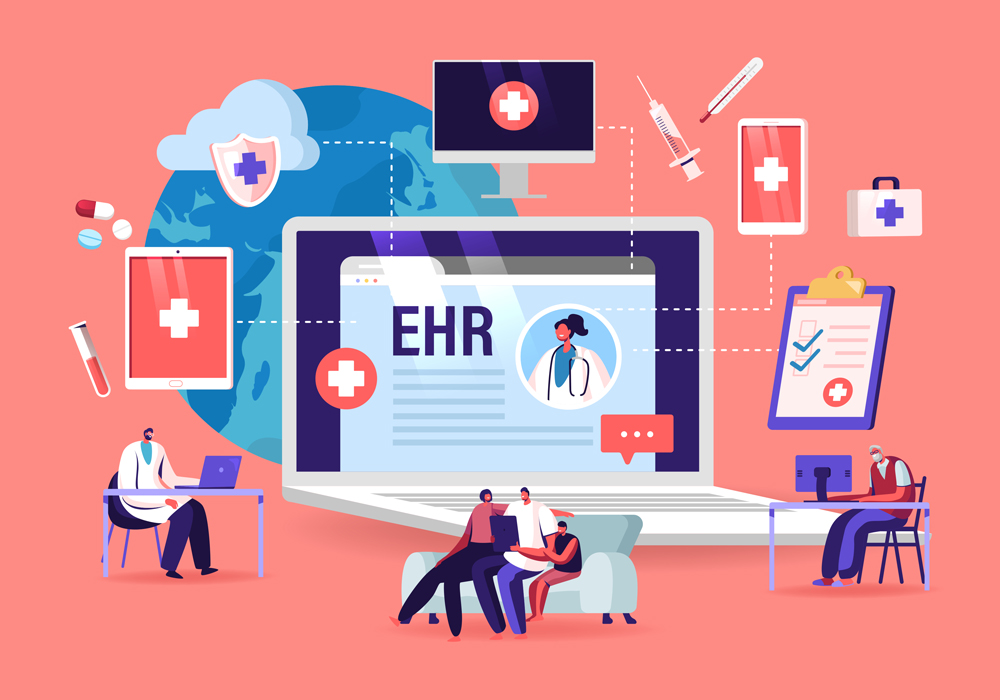The Benefits of Ultrasound EHR Integration

Every patient’s healthcare journey is different, but the amount of data generated at every point of care is growing for each and every patient. Electronic health records (EHR) are the modern standard for collecting disparate patient data and aggregating it into one comprehensive picture of each patient’s health.
EHR integration is critical at the point of care, especially when diagnostic imaging is involved. Ultrasound and EHR are increasingly fundamental to healthcare, which means they must work well together to ensure the highest standard of patient care.
Data synergy and the speed of patient care
Interconnectivity and data synergy are critical to reducing time to care and improving the caliber of care itself. The ability to easily access and exchange data from various sources in real-time empowers faster, more accurate decisions about patient care and ultimately leads to better healthcare outcomes.
At the center of everything is interoperability: the ability to share patient information across different providers and systems while maintaining data integrity and patient privacy. Data must be accurate, complete, and timely to be effective in reducing time to care. If it’s outdated, incomplete, or inconsistent, it affects a provider’s ability to act quickly, and with confidence, which can cause barriers to care and/or lead to poor patient outcomes.
How do you maintain data integrity as it moves from the point of generation, such as an ultrasound device, to the point of use? With a single, centralized source of truth — the EHR.
EHR and continuity of care
Creating a centralized record for patient data is no easy task, especially with disparate data sources spread out across the healthcare landscape. Patient data is generated constantly, and there must be systems in place for capturing it at the point of creation and sending it, safely and intact, to the patient’s EHR.
EHRs can integrate data from a variety of different sources, including lab results, imaging studies, and patient interviews. Together, all this data paints a comprehensive picture of a patient’s health, which is especially critical to continuity of care in emergent point-of-care treatment protocols.
Consider point-of-care ultrasound (PoCUS). PoCUS is a bedside diagnostic tool that enables real-time imaging of organs, blood vessels, and other systems to reduce time to care via rapid diagnosis. But PoCUS can also generate imaging data to validate assumptions based on other patient information in context — information found within a well-integrated EHR.
If an ultrasound scan reveals scarring on the liver (i.e., cirrhosis), it only displays a symptom of the larger problem. Probing the patient’s file for corroborating information can be the difference between diagnosing nonalcoholic fatty liver disease (NAFLD) vs. Hepatitis vs. alcohol abuse.
By integrating PoCUS data — and other point-of-care solutions — with an EHR, healthcare providers can make more informed decisions and deliver better patient care.
 Ultrasound integrity is paramount
Ultrasound integrity is paramount
Connecting point-of-care technologies with EHR isn’t enough. Data integrity must be consistent from Point A to Point B. Consider the following key concerns:
- Preserving fidelity and context. It’s essential to store ultrasound scans in an EHR without loss of fidelity or context data. This means the images must be high quality and include relevant patient information, such as clinical context, clinician markup, and case notes.
- Ensuring accessibility and longevity. Ultrasound scans must be accessible to authorized healthcare providers in both the long- and short-term — as part of a living EHR. This means preserving file integrity and following best formatting practices in accordance with established standards, including DICOM.
- Complying with security and privacy regulations. HIPAA standards are paramount for protecting patient privacy. Data must be encrypted and secured in ways that don’t impede accessibility by authorized persons and systems.
A PoCUS ultrasound scan is immediately useful for diagnosis, and it should remain useful as a future point of reference. Today, PoCUS aids in an NAFLD diagnosis; tomorrow, it may help evaluate the efficacy of treatment when measured against a current scan. In this case, tracking treatment progress is only possible if data integrity is maintained from the point of care to the patient’s EHR.
EHR is a tremendous tool for wrangling extensive healthcare data and making it available to clinicians. Diagnostic imaging helps clinicians visualize patient conditions, informs treatment, and improves care outcomes. Together, these two technologies raise the standard of care and enhance the quality of the patient experience.

 Ultrasound integrity is paramount
Ultrasound integrity is paramount